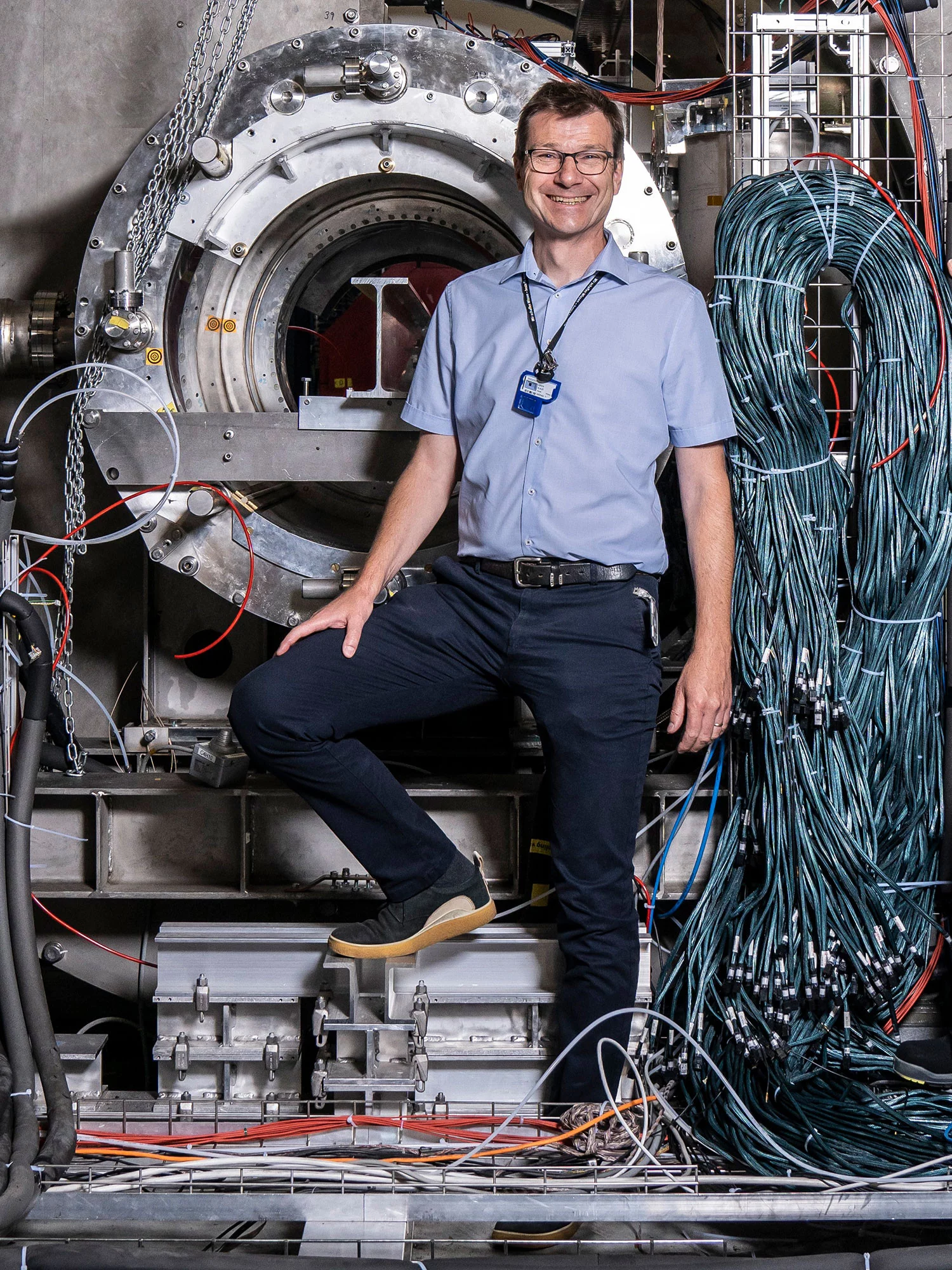HIMB is one of the two parts of the upgrade project IMPACT. Klaus Kirch, Head of the Laboratory for Particle Physics at PSI, describes how the remodelling will improve our understanding of the universe.
Mr Kirch, PSI’s muon facility is already one of the world’s most powerful accelerators. What’s the purpose of an upgrade?
Klaus Kirch: That’s true: our high-intensity proton accelerator HIPA is unique and unmatched worldwide. We are clearly out in front when it comes to muon production. Together with the University of Zurich, we are now planning a timely expansion of research carried out here on the PSI campus. This will allow us to maintain our leading global position over the next 20 years.
That’s a lot of superlatives.
Absolutely. HIPA is a jewel – and we must treasure it. We take it for granted that the facility runs so well, but certain components are already 45 years old. This means we are also a permanent construction site as we work to preserve the immense value of our incredible facility.
Can you describe some of the experiments performed specifically using muons?
On the one hand we use muons to research particle physics. This involves the tiniest particles and the biggest fundamental questions: What are the exact properties of the building blocks of matter, such as the proton as part of the atomic nucleus, and what precisely are the laws that govern the universe? We engage in fundamental research at the very frontier of current knowledge. To do this, we are working with highly advanced technology, which makes us very attractive to young scientists.
What exactly do you mean by highly advanced technology?
Amongst other things, we are currently developing the next generation of thin pixel detectors offering unprecedented time resolution in the picosecond range (10-12 secs.). Requirements are extremely demanding in particle physics and the necessary systems cannot simply be bought off the shelf. So we develop and design these devices ourselves, as our research would otherwise be unable to progress. In doing so, we set completely new standards. A great deal of our successful breakthroughs in particle physics often turn up later in a simpler and more robust version in other research fields, such as detectors or specialised electronics systems.
You said particle physics was one aspect of research with muons. What’s the other?
Apart from particle physics, PSI scientists also use muons to conduct experiments in materials science. PSI has been operating a facility for muon spin rotation since as early as 1989. With this method, you place a muon in the sample material, wait for it to decay and then – after about two millionths of a second – measure the decay product. This allows the measurement of specific local properties of the materials, which no other method can provide. As things stand, we usually only send one muon after another into the material. Once the upgrade is complete, however, we want to trace the decay particles and in doing so determine their respective place of origin. If we are able to do that, we no longer need to wait for each muon. In other words: a single-lane road becomes a 12-lane highway. Or even 100 lanes! Completely different measurements would then be possible. We could measure different areas of the sample at the same time. Or measure two different samples next to each other, with exactly the same temperature, pressure, and so on.
Why perform the upgrade at this time?
We have now reached the point where there is both the demand and the necessary know-how. We could not have managed such high particle intensities before now, as we did not have the necessary detectors or data processing capabilities. The experiments generate vast quantities of measurement data. This is also interesting for the relatively new PSI research division Scientific Computing, Theory and Data, established in June 2021. And it’s wonderful to see how the researchers from these different divisions are learning and benefiting a lot from one another.
Interview: Paul Scherrer Institute/Laura Hennemann
Further information
- News on IMPACT
- A two-part upgrade for the proton accelerator – Text published on 19 December 2022
- Radionuclides for personalised medicine – Interview with Roger Schibli on TATTOOS as part of IMPACT, published on 19 Dezember 2022
- Size of helium nucleus measured more precisely than ever before – Media release published on 27 January 2021
- In search of new physics – Article published on 13 July 2020
Contact
Prof. Dr. Klaus Kirch
Head of Laboratory for Particle Physics
Paul Scherrer Institute, Forschungsstrasse 111, 5232 Villigen PSI, Switzerland
Telephone: +41 56 310 32 78; E-mail: klaus.kirch@psi.ch [German, English]
Copyright
PSI provides image and/or video material free of charge for media coverage of the content of the above text. Use of this material for other purposes is not permitted. This also includes the transfer of the image and video material into databases as well as sale by third parties.

